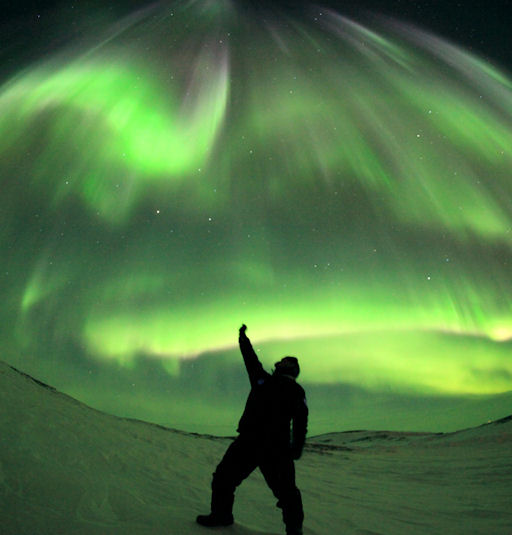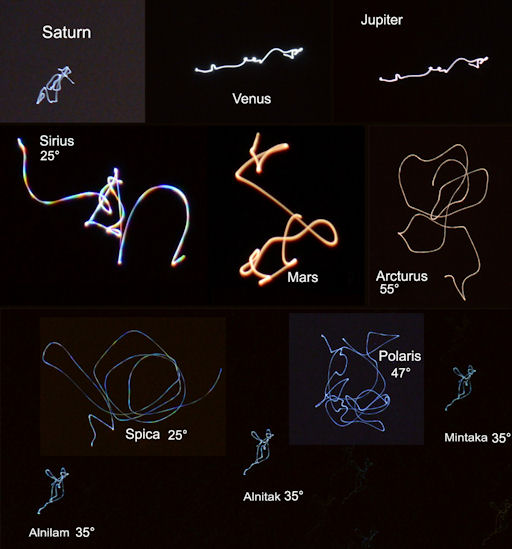They came from outer space--and you can have one! Genuine meteorites are now on sale in the Space Weather Store. | | |
FARSIDE CME: A spectacular CME rocketed away from the sun's northwestern limb during the early hours of March 18th: movie. The probable source was old sunspot AR1429, still active as it transits the far side of the sun. Earth will not be affected by the cloud.
NORTHERN LIGHTS: For the third day in a row, a high-speed solar wind stream is buffeting Earth's magnetic field. The jostling is not enough to cause a full-fledged geomagnetic storm, but some nice intermittent auroras are flickering around the Arctic Circle. In the northern village of Ivujivik, Quebec, Sylvain Serre photographed an outburst on March 18th:

"What an incredible night," says Serre. "The Northern Lights weren't there when I first went outside, but after 5 minutes they were so strong that I had to try new settings for my camera."
NOAA forecasters estimate a 30% chance of geomagnetic activity during the next 24 hours. High-latittude sky watchers should remain alert for auroras as the solar wind continues to blow. Aurora alerts: text, phone.
more images: from Jónína Óskarsdóttir of Faskrudsfjordur, Iceland; from Peter Scott of Durness, Scotland, UK; from Francis Anderson of Tuktoyaktuk, Northwest Territories Canada; from Chad Blakley of Abisko National Park, Sweden; from Iurie Belegurschi of Iceland; from Dirk Obudzinski of Cleary Summit, Alaska; from Petra Schneider of Reykjanes peninsula, Iceland; from Greg Kretovic of AuTrain, Michigan;
SCINTILLATION SQUIGGLES: Everyone knows that stars twinkle but planets do not. The reason has to do with angular size. Stars are distant pinpricks smaller than the thermal irregularities in Earth's atmosphere that refract their light. Each packet of air that passes in front of a star produces a well-defined change in color or brightness. Planets, on the other hand, are relatively nearby and wide; they span many atmospheric irregularities, which tends to smooth out the prismatic action.
Photographer Monika Landy-Gyebnar of Veszprem, Hungary, has found a kinetic way to demonstrate the effect. "When photographing a star or planet, kick the tripod during the exposure." She's applied this technique to many stars and planets, and the resulting collection of squiggles reveals the character of their twinkles:

"If we take a photo of a star with a shaking camera, the result is a wavy line with many colors," she points out. "If we photograph a planet, however, there is no change; the color and width of the squiggle are nearly constant."
The scintillation effect is greatest for stars near the horizon, which must shine through a greater distance of turbulent atmosphere. Angles noted in the image above are altitudes. The lowest-hanging stars display the strongest and most colorful twinkling.
"Demonstrating this is a 'must-do' thing when you give a lecture or show on astronomical observations for novices," she concludes. Observing tips and more of Landy-Gyebnar's "scintillation squiggles" may be found here.
February 2012 Aurora Gallery
[previous Februaries: 2011, 2010, 2009, 2008, 2007, 2006, 2004, 2003, 2002]

